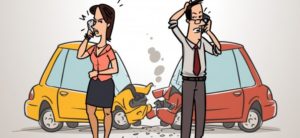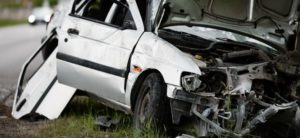ARE YOU AN AGGRESSIVE DRIVER?
According to the National Highway Traffic Safety Administration, an aggressive driver is anyone who places his own interest or time demands above the safety of others on the road. Likely, most people are guilty of becoming an aggressive driver at some point, but it is those who make it a habit who are most dangerous on the road. Aggressive drivers are involved in more accidents than defensive drivers.
Who are Aggressive Drivers?
Aggressive drivers run the gamut from frustrated commuters to reckless teenagers. The Insurance Information Institute provides an illustrative, but not exhaustive, list of common aggressive driving behaviors.
- Tailgating (i.e. following the car in front too closely or “riding the bumper”);
- Cutting off vehicles (i.e. changing lanes without leaving enough space between vehicles);
- Driving on the shoulder, sidewalk, ditches, etc.;
- Failing to yield;
- Accelerating at yellow lights; and
- Failing to obey traffic signs and warnings.
NHTSA specifically identifies four critical behaviors that are responsible for or a contributing factor in 27 percent of all fatal crashes: speeding, weaving, passing where prohibited, and operating vehicles unsafely during adverse weather conditions. Weaving refers to changing lanes recklessly, usually without signaling.
For a free legal consultation, call (725) 900-9000
Passing where prohibited occurs when a car passes the vehicle in front of it against road recommendations (for example, passing a car while going into the opposing traffic’s lane or around a corner). Finally, unsafe driving during adverse weather conditions refers to speeding in the rain, snow, fog, etc. – i.e. any condition in which the driver is unable to operate the vehicle safely. These actions, along with speeding, were a contributing factor in nearly 1 in 3 fatal accidents resulting in a loss of 10,111 lives in 2016.
In short, aggressive drivers are reckless. Aggressive drivers engage in unsafe driving behavior which puts their life and the lives of their passengers and other drivers at risk.
Techniques to Reduce Frustration
The Insurance Information Institute recommends drivers who suffer from frustration or anxiety should anticipate their commutes and traffic – build in time so they aren’t rushed to their destination. Another conventional technique involves avoiding traffic altogether; for example, some people join gyms near their office and workout during peak traffic hours. Another trick the Institute recommends is to engage in distracting activities, like listening to a podcast or audiobook.
No obligation consultations are always free.
Let Us Help You! Call Now: (725) 900-9000



